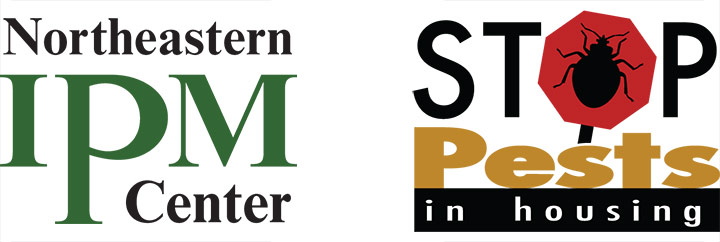Reducing Pest Infestations in Multifamily Housing: Research Updates on Mice and Cockroaches
Recorded May 6, 2021
Download presentation slides (PDF, 5.5 MB) — Note: unpublished data has been removed.
Download certificate of completion (PPT)
Description


House mouse (left) and German cockroach (right). Photos: Ed Freytag, City of New Orleans, Bugwood.org / Michael Merchant, Texas Cooperative Extension, Bugwood.org.
Cockroaches and mice are two of the most troublesome and notorious pests in multifamily housing, but there are effective ways of managing them.
Integrated pest management (IPM) strategies can help control or eliminate infestations with minimum impact on residents’ health and well-being, and a better understanding of these pests can help guide decisions about how to combat them.
This presentation will provide an overview of cockroach management, including:
- Their prevalence in low-income communities
- What factors contribute to high infestation rates
- How to reduce cockroach infestations, effectively, using IPM
- The benefit of IPM for reducing cockroach allergens and insecticide residues
For house mice, we will review:
- Their biology and the role it plays in monitoring their infestations
- Recent research on monitoring and management techniques that produce results in low-income, multi-family housing communities
- Their spatial distribution and the importance of proper bait selection
Dr. Changlu Wang

Dr. Changlu Wang, Extension Specialist at Rutgers University.

Shannon Sked, PhD candidate at Rutgers University.
Extension Specialist at Rutgers University
Dr. Wang received his B.S. from Beijing Forestry University (1985), M.S. from Chinese Academy of Forestry (1988), and Ph.D. from West Virginia University (1998). His research interests are developing new and improved techniques and materials for urban pest management, insecticide resistance, and insect behavior. He published 6 books/book chapters, 93 peer-reviewed papers, and 26 non-peer reviewed articles, and coauthored 4 patents. Dr. Wang received multiple awards including the “Excellence in Integrated Pest Management” award by Eastern Branch of Entomological Society of America in 2017, “Secretary’s Award for Healthy Homes Research Innovation” from U.S. Department of Housing and Urban Development in 2017, New Jersey Governor’s Environmental Excellence Award in Healthy & Sustainable Communities category in 2020.
Shannon Sked
PhD candidate at Rutgers University
Shannon Sked is a PhD candidate in the Department of Entomology, Rutgers University, studying under Dr. Wang. He received his BS from Rutgers University (2000) and MS from Penn State University (2003). His research focus was in modeling phenologies of insect communities. He then was a Navy entomologist overseeing structural pests, specifically focusing on pests related to imports, exports, and within the logistics chain. He had the unique opportunity to practice applied entomology in the Middle East, Northern Africa, and the Caribbean, and on the eastern shore of the United States. He has more recently worked for Western Fumigation as the director of that division, overseeing pest management systems within international produce, commodity, and equipment transportation. In 2017, he returned part time to academia to pursue a PhD in entomology at Rutgers, focusing on spatial dynamics of economically important urban and structural pests such as bed bugs and commensal rodents.
Q&A
Cockroaches
Q. Are these stats for multi-family housing, low income housing, or just general stats?
A. The numbers are based on 1,753 apartments occupied by low-income residents in four cities in New Jersey.
Q. Do you know if North Dakota has cockroach problems? I have not seen any here.
A. My experience is they are rare in dryer climates, but not unheard of.
Mice
Q. Is it thought that the rodenticide bait chemicals were detectable via taste/smell, or are they like us and would choose chocolate over anything else?
A. In our study, chocolate was much more palatable than the commercial baits. Peanut butter is similarly attractive as chocolate, but the data is not presented here.
Q. What kind of chocolate spread works?
A. We used Hershey’s. But I think any brand would work.
Q. Was there a reason for not using any trapping for control?
A. We used snap traps at the end of the baiting period to confirm elimination and additional control. But the snap traps caught mice in only two apartments.
Q. Were rodenticides incorporated into the chocolate spread?
A. No. Chocolate is only used for monitoring mice.
